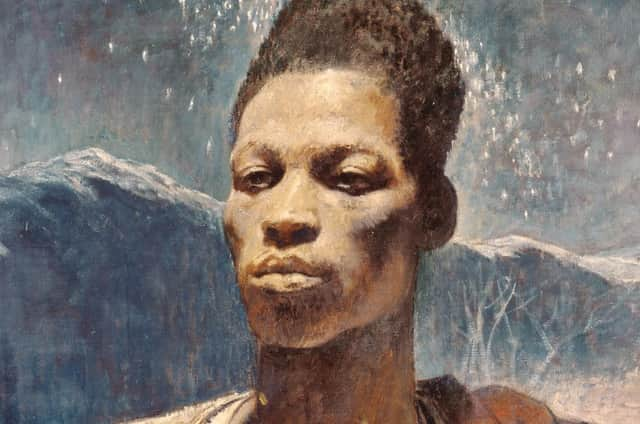Chichester - why Pallant House Gallery latest exhibition will be a summer highlight


Bringing together more than 80 paintings, drawings and sculptures, many unseen in public for decades, the exhibition will chart the artist’s development from Edwardian swagger portraits to a radically modernist style in the 1930s (May 14-October 23).
It will include Philpot’s portraits of actors, dancers, poets, society hostesses, male lovers, friends and family members. The exhibition will also examine the artist’s contribution to the sensitive representation of black sitters from the 1910s to 1930s, as well as his exploration of both queer and religious subjects.
Advertisement
Hide AdAdvertisement
Hide AdSpokeswoman Sarah Jackman said: “Glyn Philpot enjoyed a prodigious rise to fame winning a scholarship to Lambeth School of Art in 1900 where he created early works inspired by Pre-Raphaelite and Arts & Crafts movements. After encountering the works of Velázquez, Titian and Manet, during his studies at the Académie Julian in Paris and travels in Spain, he created a series of sumptuous figure paintings with rich glazes influenced by the Old Masters. Philpot went on to become a highly successful and sought-after portrait painter, based in London. He achieved international recognition when one of his works was acquired by the Stedelijk Museum in Amsterdam, following its showing at the 1910 Venice Biennale, and he won First Prize at the Carnegie International Exhibition in Pittsburgh, USA in 1913.
“That year, and again in 1921, he spent several months in the USA, where he painted portraits of society figures in Chicago including The Man in Black (1913), depicting his lover Robert Allerton who was dubbed ‘the richest bachelor in Chicago’, and Isabelle McBirney (1913), both of which will be included in the exhibition. Philpot’s sitters included a who’s who of British society, from glamorous duchesses and countesses, such as Loelia, Duchess of Westminster, whom he painted in 1930, to poets and writers including Siegfried Sassoon, painted during the First World War, and actors such as Glen Byam Shaw, whom he painted as the character Laertes in Hamlet in 1934-5.
“Alongside these portraits, Philpot gained a reputation for his paintings, sculptures and drawings of unknown black sitters, and central to the exhibition will be an exploration of how these relate to wider dialogues about identity and representation in modern art.
“In 1912-13, Philpot produced what is possibly the first recorded group of portraits of black subjects in Modern British art, which include sensitive paintings of an Ethiopian model known as Billy. The exhibition will also include his Portrait of a Black Man (1913-14) which has been recently rediscovered, having not been shown in public since 1923 when it was part of Philpot’s first retrospective at The Grosvenor Galleries. In 1928-9, he was introduced by the theatre designer Oliver Messel to Henry Thomas, a Jamaican ship stoker, who had missed his boat home.
Advertisement
Hide AdAdvertisement
Hide Ad“Thomas was the model for a compelling series of paintings and drawings, and sculptures over the next eight years, including Philpot’s powerful Jamaican Man in Profile (Henry Thomas) (1934-35) and Head of a Man, Heroic Scale (1937), both of which will be on display.
“Philpot’s career was defined by seemingly opposed contradictions: between tradition and modernity; society portraits and unknown black models; and religious subjects and bold expressions of queer identity at a time when it was illegal to be homosexual.
“Philpot was a convert to Catholicism and even became President of the Guild of Catholic Painters. However, he created paintings of religious subjects that are often homoerotic in tone, such as Resurgam (1930) and Angel of the Annunciation (1925), a very modern interpretation of the Annunciation where the viewer takes on the perspective of Mary.
“Alongside these, he presented modern interpretations of Greek and Roman myths, which arguably he used to explore themes relating to his homosexuality under the cloak of classicism, such as Penelope (1923) and Echo and Narcissus (1930).”
Advertisement
Hide AdAdvertisement
Hide AdPhilpot died of a stroke in 1937, just as he was receiving acclaim for his modern style. He was given a memorial exhibition at the Tate Gallery in 1938. Although he was best known in his lifetime for his society portraiture, Philpot created one of the most substantial and sensitive artistic records of the black presence and of queer culture in Britain and Europe in the years before the Second World War.
The exhibition will include loans from public institutions including Tate, National Portrait Gallery, Victoria and Albert Museum, the Fitzwilliam Museum, the Ashmolean Museum, Brighton Museum and Art Gallery, Victoria Art Gallery Bath, Leeds City Art Gallery,
Manchester Art Gallery, Jerwood Collection and the Royal Pavilion and Museums Trust Brighton and Hove, as well as numerous private collections.
Have you read: Grace: why tonight's episode confirmed Brighton-based detective series as essential viewing
Advertisement
Hide AdAdvertisement
Hide AdHave you read: Downton Abbey - those all important Sussex connections
Have you read: Grace: why Roy Grace creator Peter James is so delighted with John Simm’s portrayal of his Brighton-based detective
Have you read: Petworth Festival: This is when it is being held, here are the names of those appearing, and this is how to obtain tickets
Have you read: Hastings panto announced
Have you read: Exploring the great joys of the South Downs Way
Advertisement
Hide AdAdvertisement
Hide Ad